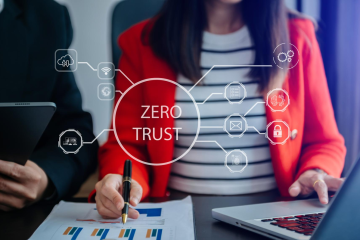In the world of information security, SOC1 stands as a critical framework for service organizations, especially those that manage financial data for their clients. Understanding and navigating SOC1 compliance is not just about adhering to a set of standards; it’s about reinforcing trust and integrity in the services you provide. This post delves into the essentials of SOC1, its relevance, and practical advice for achieving compliance.
Understanding SOC1
SOC1, or Service Organization Control 1, is a report governed by the Statement on Standards for Attestation Engagements No. 18 (SSAE 18). It focuses on a service organization’s internal controls relevant to their clients’ financial reporting. Essentially, SOC1 is pivotal for any service provider that handles financial transactions or data that could impact their clients’ financial statements.
Types of SOC1 Reports
SOC1 reports come in two types:
- Type I: Assesses the design of a service organization’s controls at a specific point in time.
- Type II: More comprehensive, evaluating the effectiveness of these controls over a designated period, typically a minimum of six months.
The Importance of SOC1
For businesses that provide services affecting their clients’ financial reporting, SOC1 compliance isn’t just a regulatory hurdle; it’s a testament to their commitment to maintaining a secure and reliable operating environment. It reassures clients that the service provider has robust controls in place, which is crucial for building and maintaining trust.
Steps to Achieve SOC1 Compliance
- Understand the Scope: Clearly define the services and controls that will be assessed. This step is crucial for focusing your compliance efforts effectively.
- Conduct a Gap Analysis: Identify any discrepancies between your current controls and the SOC1 requirements. This analysis will guide your compliance strategy.
- Remediate Gaps: Address the identified gaps by implementing or enhancing controls. This process might involve revising procedures, training staff, or adopting new technologies.
- Engage an Auditor: SOC1 compliance requires a third-party auditor to assess your controls. Choosing a reputable and experienced auditor is vital for a thorough and credible evaluation.
- Prepare Documentation: Comprehensive documentation of your policies, procedures, and controls is essential for a successful audit. This documentation should be clear, detailed, and easily accessible.
- Undergo the Audit: The auditor will review your controls, test their effectiveness, and provide a report. For a Type II report, this process will occur over the specified period.
Maintaining Compliance
Achieving SOC1 compliance is not a one-time event but an ongoing commitment. Continuous monitoring, regular reviews, and updates to controls are necessary to maintain compliance and adapt to evolving risks and regulations.
Conclusion
Navigating SOC1 compliance is a journey that reinforces the reliability and security of your services. It’s an investment in your business’s reputation and in the trust of your clients. By understanding SOC1’s requirements, engaging in thorough preparation, and committing to continuous improvement, your organization can not only achieve but sustain SOC1 compliance, paving the way for lasting success in the competitive landscape of service providers.


